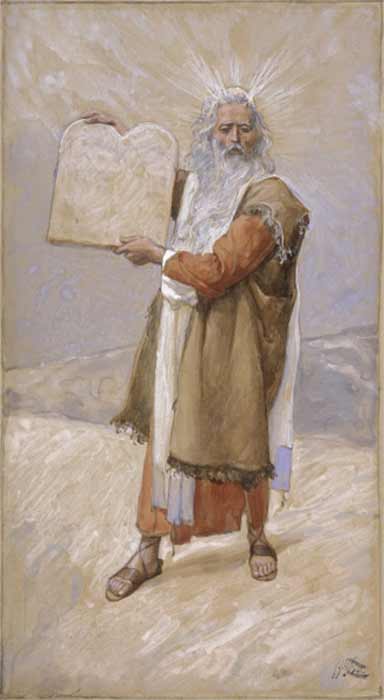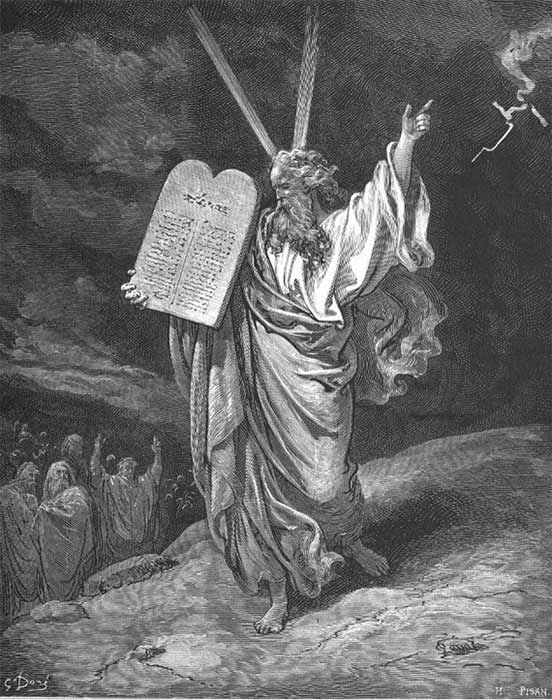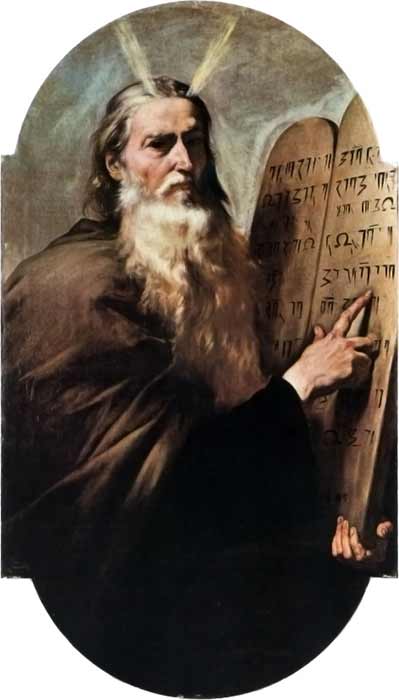
“His Face Was Radiant”: Pulling Back The Veil On The Mystery Of Moses’ Shining Face
One of the Bible’s most enduring exegetical enigmas has to be the strangely shining semblance of Moses. The Book of Exodus relates how after the great Hebrew lawgiver receives the Ten Commandments from the Lord, he descends Mount Sinai, upon which everyone notices his face has become newly ‘radiant’. Fearful, they withdraw from Moses, and he is forced to wear a veil whenever addressing the people. This incident has remained a perplexing problem for centuries, first because the Hebrew verb meaning ‘to send out rays’, qâran, can also mean ‘to grow horns’, but second, because of the inherent difficulty in visualizing what exactly was happening to Moses when he was qâran. Was the skin of his face sending out light rays, or was it growing horns?

Moses and the Ten Commandments by James Tissot (1896-1902) Jewish Museum, New York. (Public Domain)
Those who view Moses as merely an ancient myth or even an invented solar deity suggest that his shining face is an example of his association with ancient Near Eastern solar gods like Ra, Helios, or Shamash. Traditional commentators like Philo of Alexandria suggested that the Glory of God had somehow rubbed off on Moses. Modern scholars like Gary Rendsburg suggest that this was a later literary device used to make Moses the equal of pharaoh, who likewise during the 18th to -20th dynasties wore ram horns and was described in contemporary texts as ‘shining like the sun’. The present author contends that Moses’ shining face is actually a clue to his own secret royal past, hidden in plain sight in the Bible. If Moses was indeed a king, who was he?

Moses Comes Down from Mount Sinai, by Gustave Doré, (1866.) An example of the integration of the ideas of horns and light rays into literal “horns of light rays”(Public Domain)
And Then I Saw His Face
The story of Moses’ glowing face takes place at the conclusion of the Revelation by Yahweh of the Law of the Covenant. God had given Moses a new law code and instructions for the Tabernacle. After 40 days of communion with God, Moses descended the mountain with the tablets of the Ten Commandments. The mystery begins when Moses re-appears before the people of Israel, who are suddenly filled with fear and awe at the sight of him, a seemingly transformed him.
- Parallels Between The Jewish Fall Festival And Akhenaten’s Royal Jubilee
- Early Jewish Monotheism and Egyptian Atenism – One And The Same?
- Elusive Mount Sinai, Hidden In Plain Site In Egypt
The original verb used in Exodus to describe Moses’ shining face is qâran (pronounced kah- r̃an’): “When Moses came down from Mount Sinai with the two tablets of the covenant law in his hands, he was not aware that his face qâran because he had spoken with the Lord. When Aaron and all the Israelites saw Moses, his face qâran, and they were afraid to come near him. But Moses called to them; so Aaron and all the leaders of the community came back to him, and he spoke to them. Afterward all the Israelites came near him, and he gave them all the commands the Lord had given him on Mount Sinai. When Moses finished speaking to them, he put a veil over his face.” (Exodus 34: 29-33)
As Professor Bill Propp describes: “the context gives us some indication of the meaning of qâran – it is a frightening condition of the skin caused by speaking to God.” Scholars agree that the verb is based on the noun qeren, or ‘horn’, although most lexicons list both possible translations of qâran: 1) sending out light rays as well as 2) bearing horns, depending on the context. In Psalms 69:31, it is used to refer to a bull with its horns. However, most translators felt awkward suggesting Moses’ face had grown horns, so they instead said his face had become ‘radiant with light rays’. They based this on Habakkuk 3:4, which uses a similar word to describe God with rays of light (qârnayim) flashing from his hands: “His brightness was like the sunrise, qârnayim flashed forth from his hand…”





